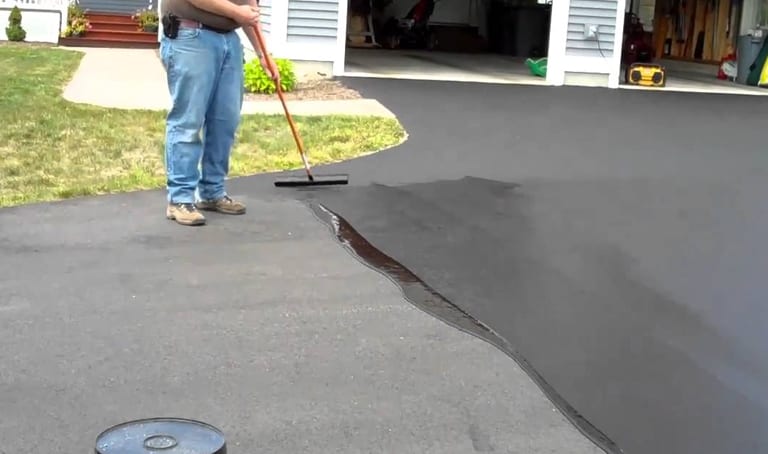Make The Most Of Safety with Angle Parking Areas: Superior Asphalt Sealing
Make The Most Of Safety with Angle Parking Areas: Superior Asphalt Sealing
Blog Article
Cold Mix Asphalt Vs. Hot Mix Asphalt: Which Is Right for You?

Make-up Distinctions
Cold mix asphalt is generated by emulsifying the asphalt binder with water and an emulsifying representative prior to blending it with accumulation. The warm mix asphalt manufacturing procedure includes heating up the accumulation and asphalt binder independently prior to incorporating them at the asphalt plant.
In addition, cool mix asphalt often tends to be much less thick and a lot more versatile than hot mix asphalt. This versatility makes it better suited for locations with greater degrees of motion, such as driveways or roads with rush hour. In comparison, warm mix asphalt is understood for its high toughness and resistance to rutting and splitting, making it a favored choice for highways and high-traffic roadways where durability is important.
Setup Process Differences
The process of setting up chilly mix and hot mix asphalt shows significant variances in their demands and treatments. In comparison, warm mix asphalt demands a much more elaborate setup process. Due to the heating requirements, hot mix asphalt setups are normally lugged out by experts with specific tools, making sure a much more permanent and structurally sound result.
Longevity and Long Life Variables
When taking into consideration asphalt alternatives, durability and durability are critical elements to review for lasting pavement performance. Warm mix asphalt (HMA) is recognized for its extraordinary sturdiness and durability.
In terms of long life, HMA usually outmatches CMA due to its superior stamina and resistance buildings. HMA sidewalks have a longer life span, calling for much less constant fixings and upkeep, which can convert to cost financial savings over time. In addition, HMA pavements are more conveniently customizable to satisfy certain job requirements, better boosting their longevity.
Cost Considerations
Thinking about the financial ramifications is an important element when examining the choice in between hot mix asphalt (HMA) and cold mix asphalt (CMA) for pavement projects. While the first price of warm mix asphalt is normally higher than that of cool mix asphalt, HMA usually provides an extra affordable remedy in the lengthy run due to its exceptional toughness and longevity.
In enhancement to material expenses, it's essential to consider the expenses associated with setup and upkeep when comparing HMA and CMA. Inevitably, the choice between HMA and CMA should take into account not just the preliminary expense yet likewise the long-lasting monetary implications to establish the most cost-effective alternative for the particular sidewalk project.
Environmental Impact Comparison
Contrast of the ecological impacts in between warm mix asphalt (HMA) and chilly mix asphalt (CMA) reveals distinctive differences in sustainability techniques. HMA production needs heats, causing raised energy usage and greenhouse gas emissions. The procedure likewise launches volatile natural compounds (VOCs) and hazardous air pollutants (HAPs) into the atmosphere. In contrast, More about the author CMA is generated and applied at lower temperatures, lowering power usage and emissions substantially. The lower manufacturing temperature levels of CMA lead to reduced gas usage and reduced degrees of CO2 discharges, making it an extra eco friendly option.
Additionally, the use of CMA often involves recycling existing asphalt pavement, advertising resource preservation and reducing the quantity of waste sent to landfills. By opting for CMA over HMA, roadway construction tasks can contribute favorably to environmental preservation efforts.
Conclusion
In verdict, the selection between cold mix asphalt (CMA) and warm mix asphalt (HMA) depends on numerous elements such as make-up, installment procedure, sturdiness, durability, price, and ecological effect. asphalt patch repair. While CMA provides a cost-efficient and quick solution for small repair services, HMA guarantees premium durability and longevity for rush hour areas. Consider these aspects very carefully to figure out which kind of asphalt is the appropriate selection for your paving requires

Taking into consideration the economic effects is a crucial element when assessing the choice between warm mix asphalt (HMA) and cold mix asphalt (CMA) for pavement projects. While the first cost of warm mix asphalt is typically higher than click for more that of cold mix asphalt, HMA typically supplies a much more economical remedy in the long run due to its premium toughness and long life. asphalt patch repair.Comparison of the ecological influences in between warm mix asphalt (HMA) and chilly mix asphalt (CMA) reveals distinctive differences in sustainability index practices.In verdict, the selection between chilly mix asphalt (CMA) and hot mix asphalt (HMA) depends on different aspects such as composition, setup process, longevity, durability, expense, and ecological impact
Report this page